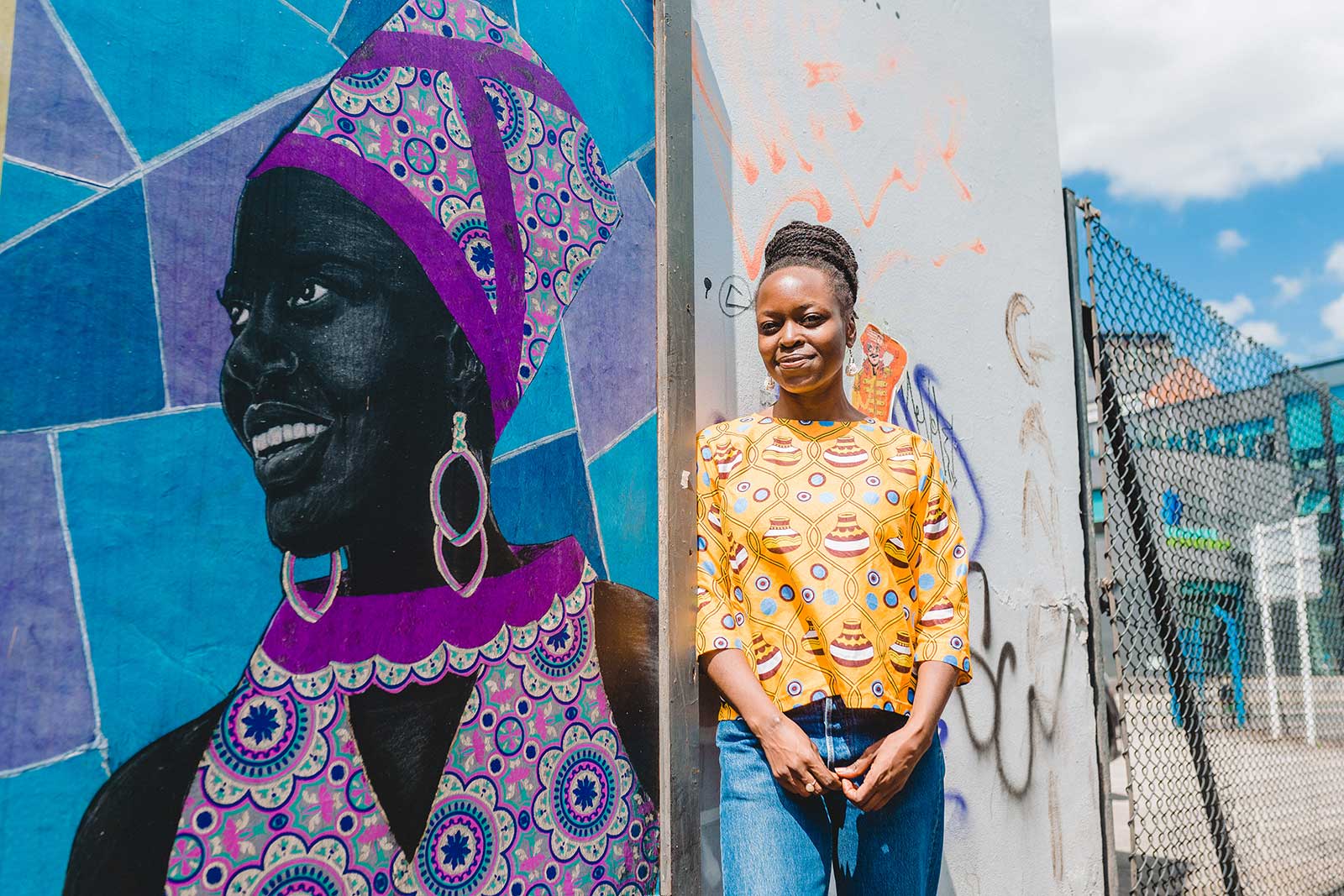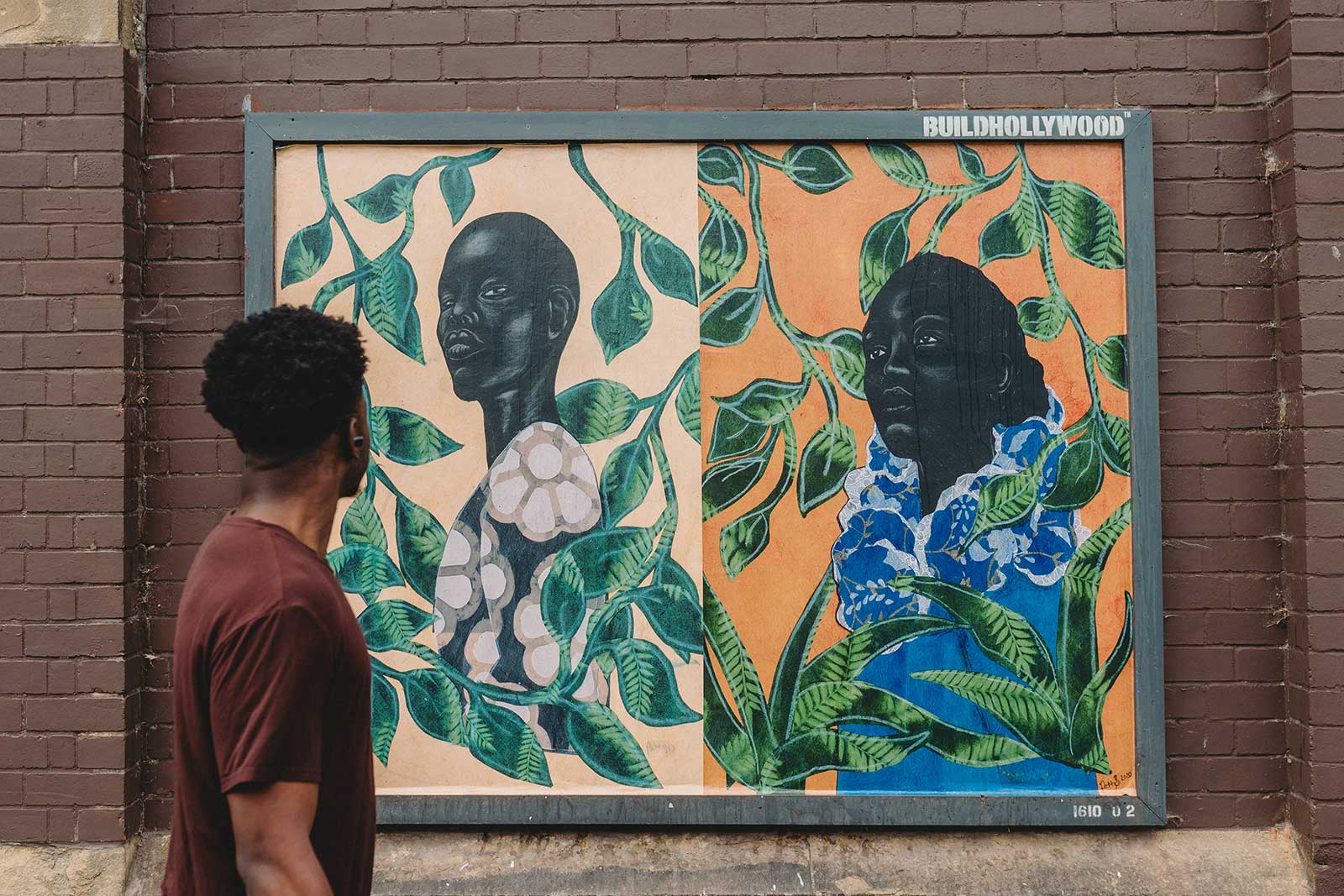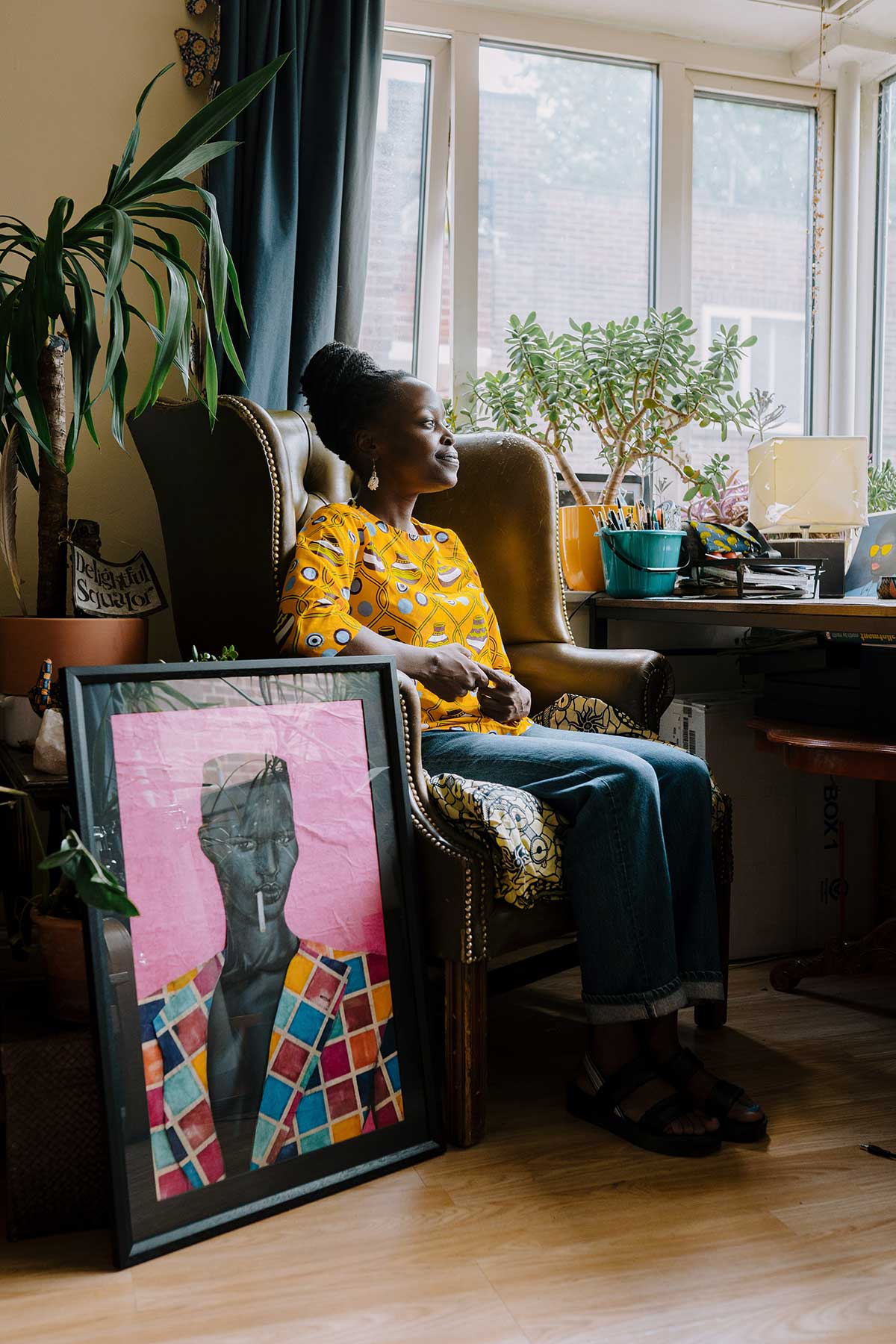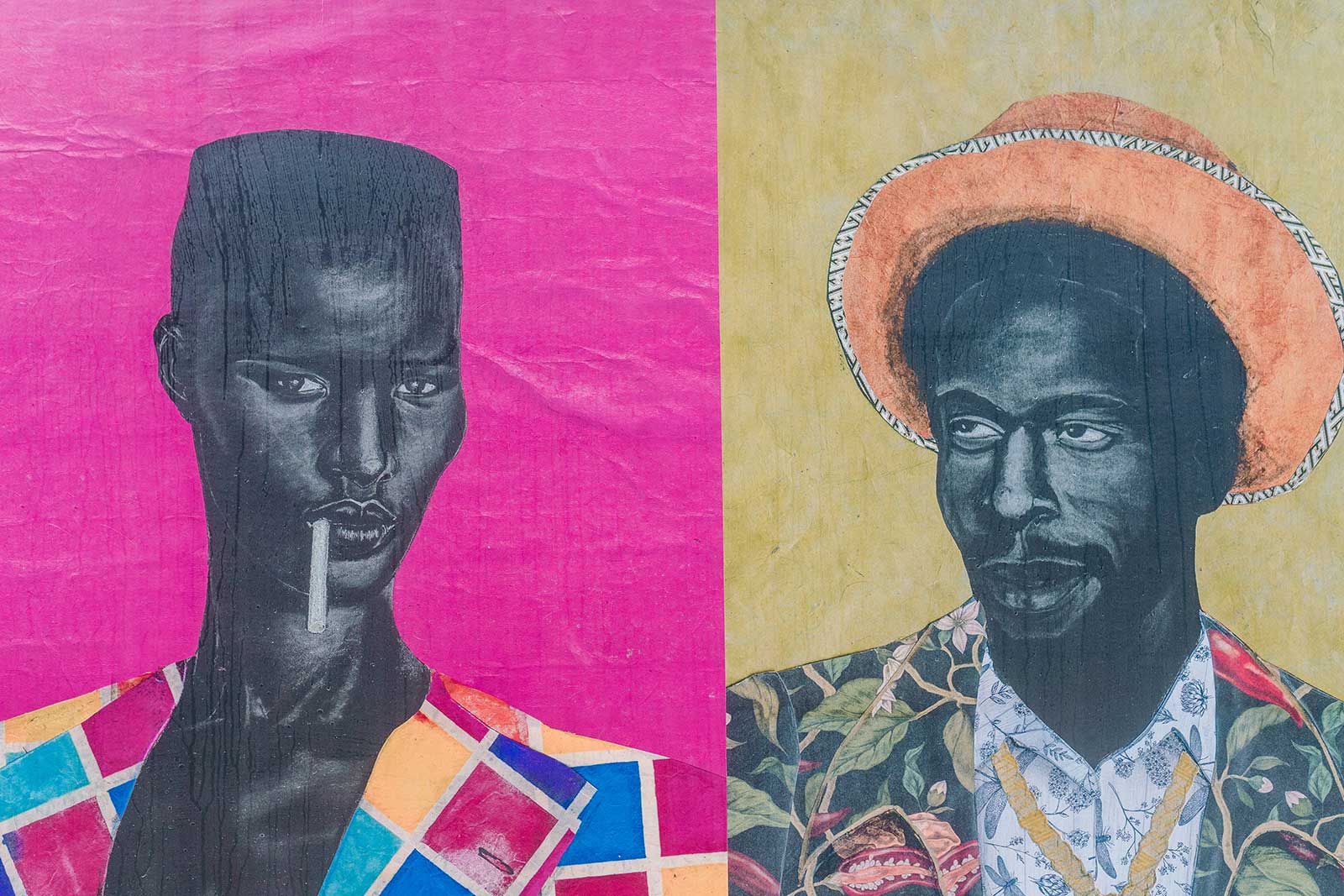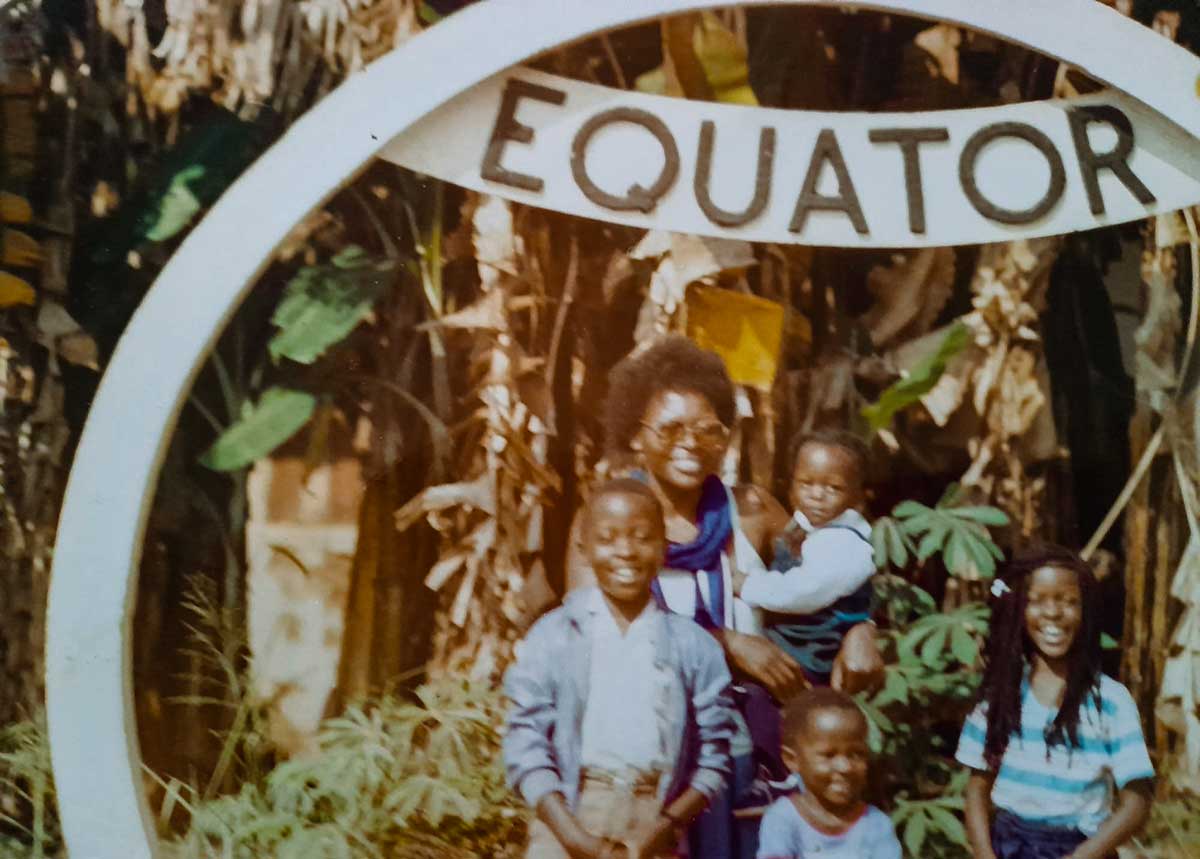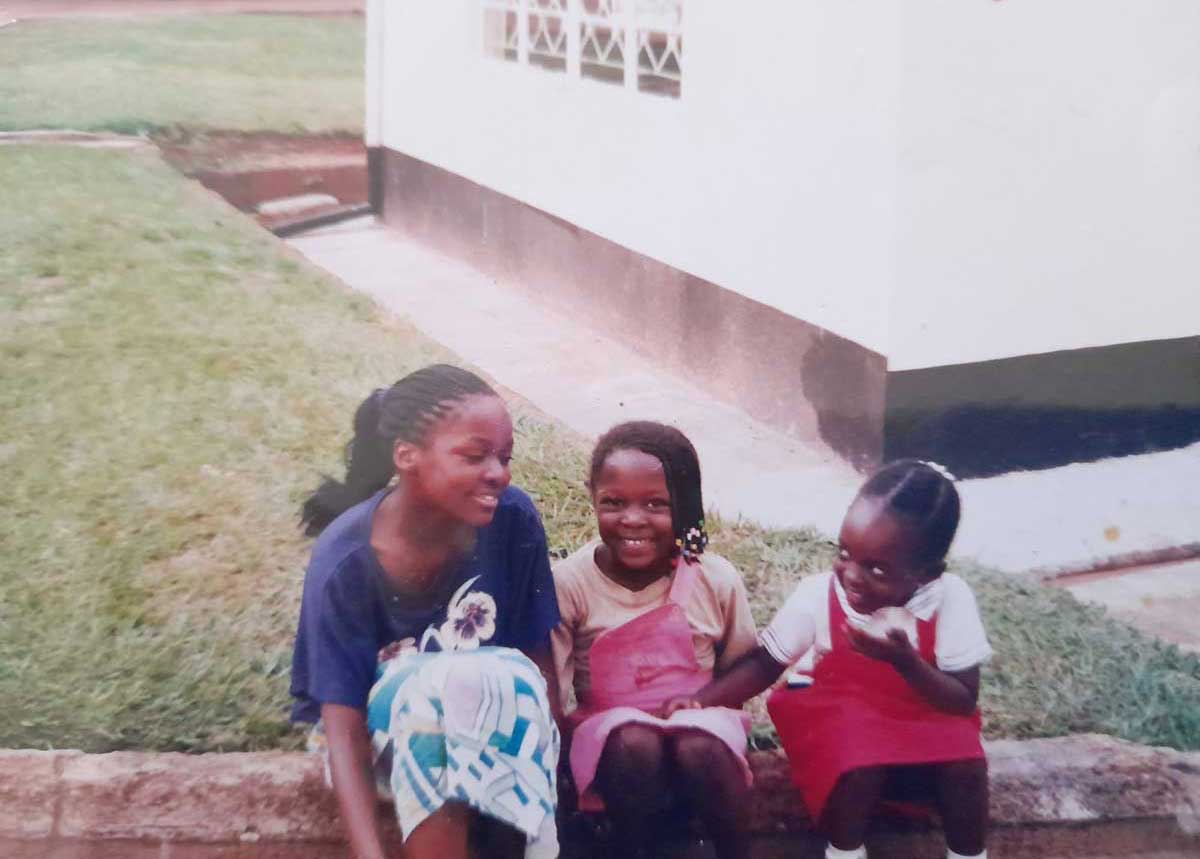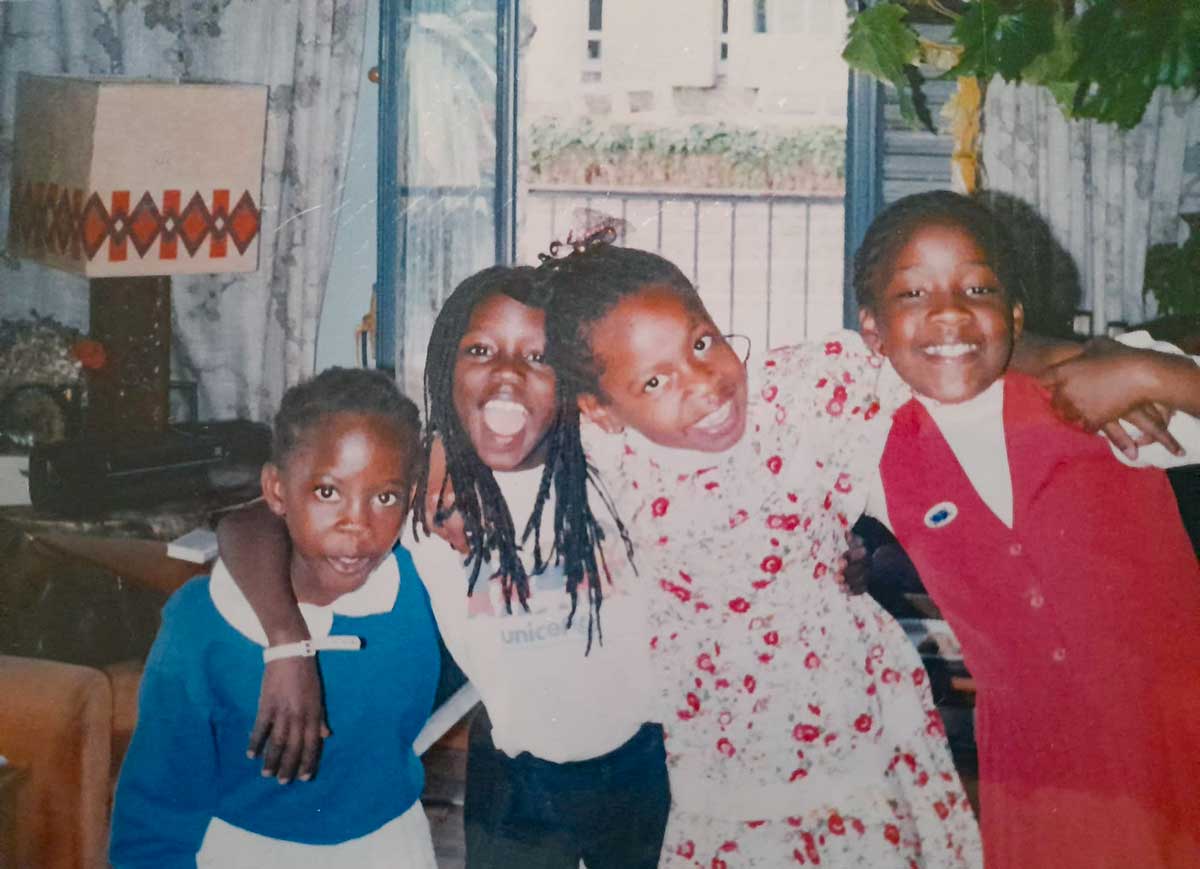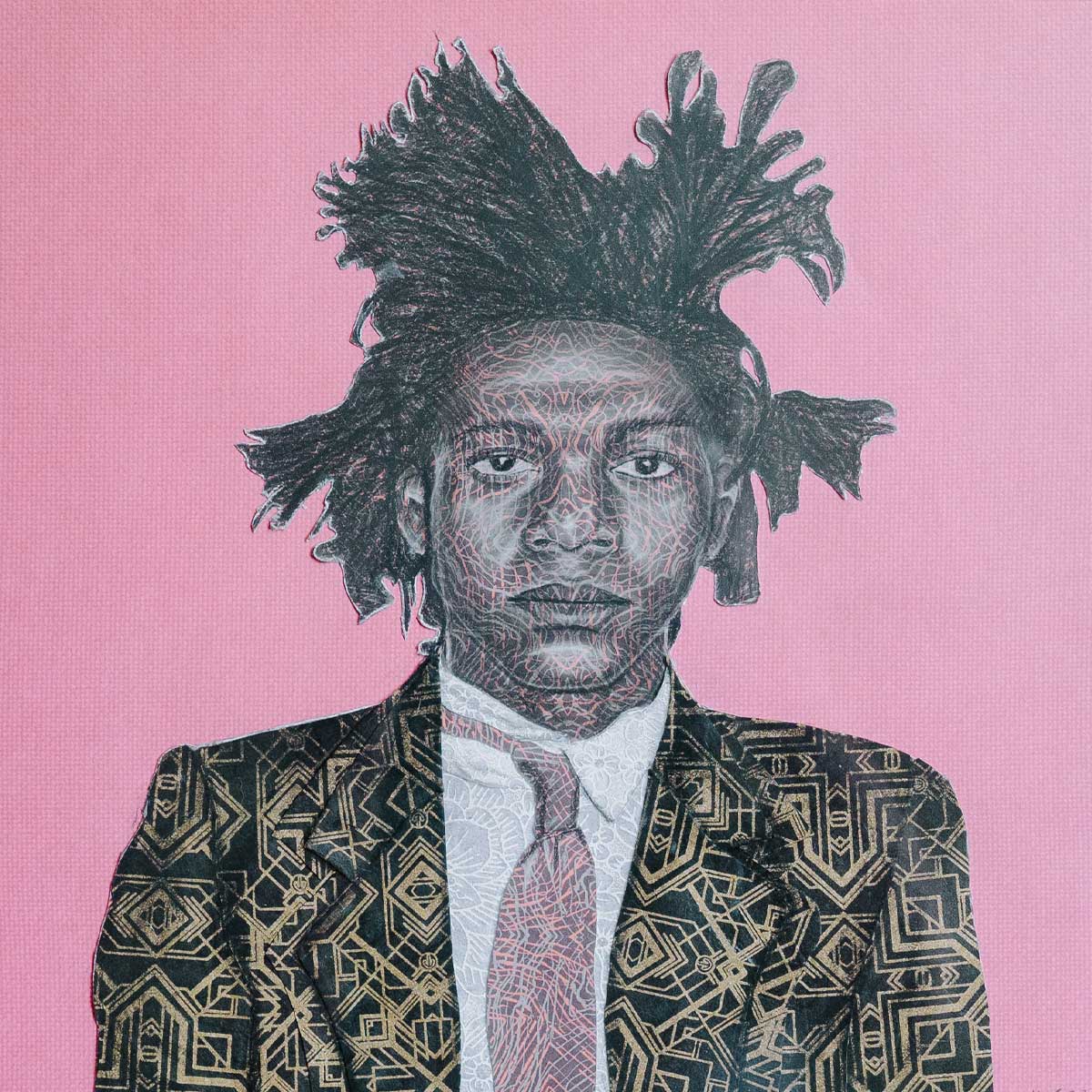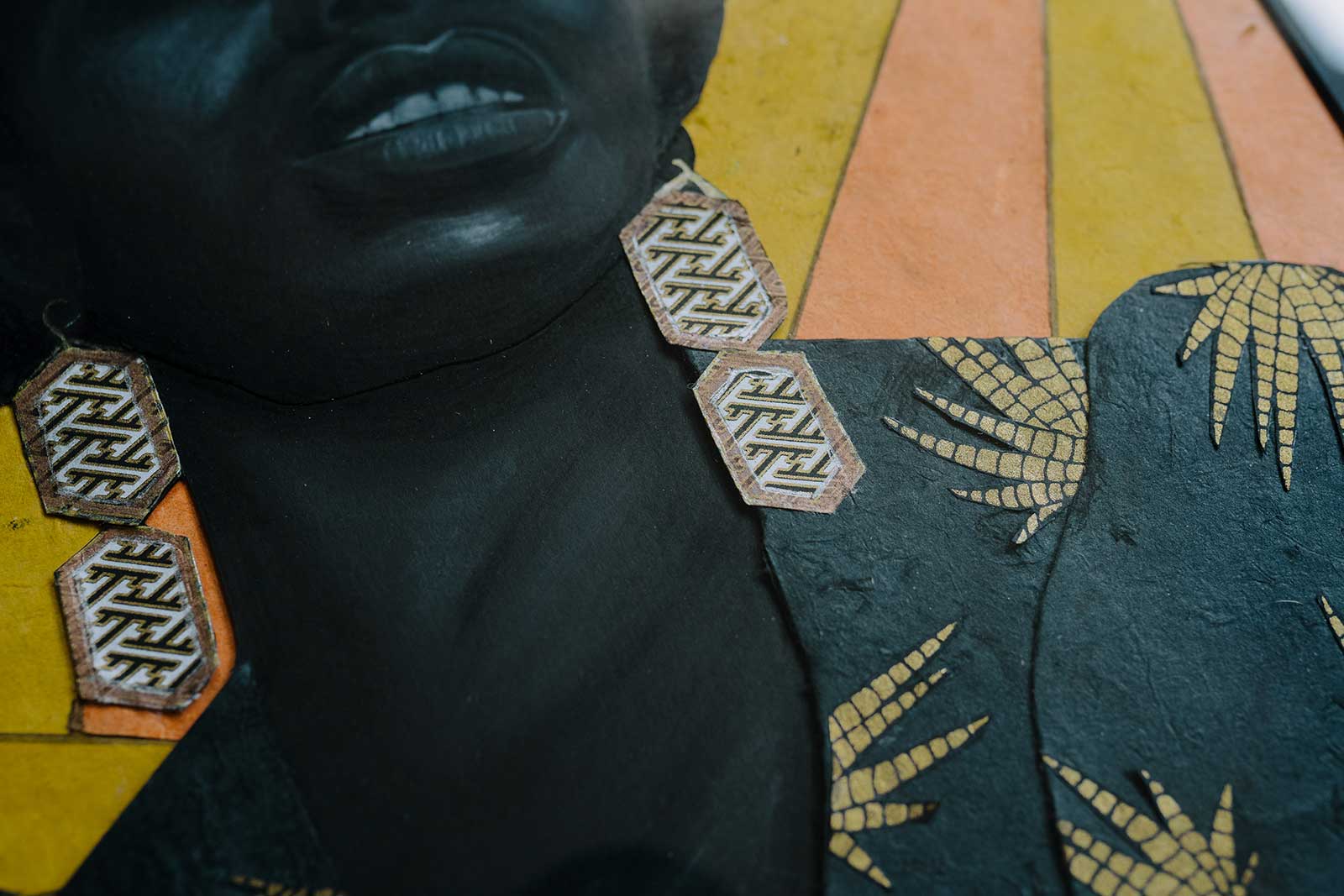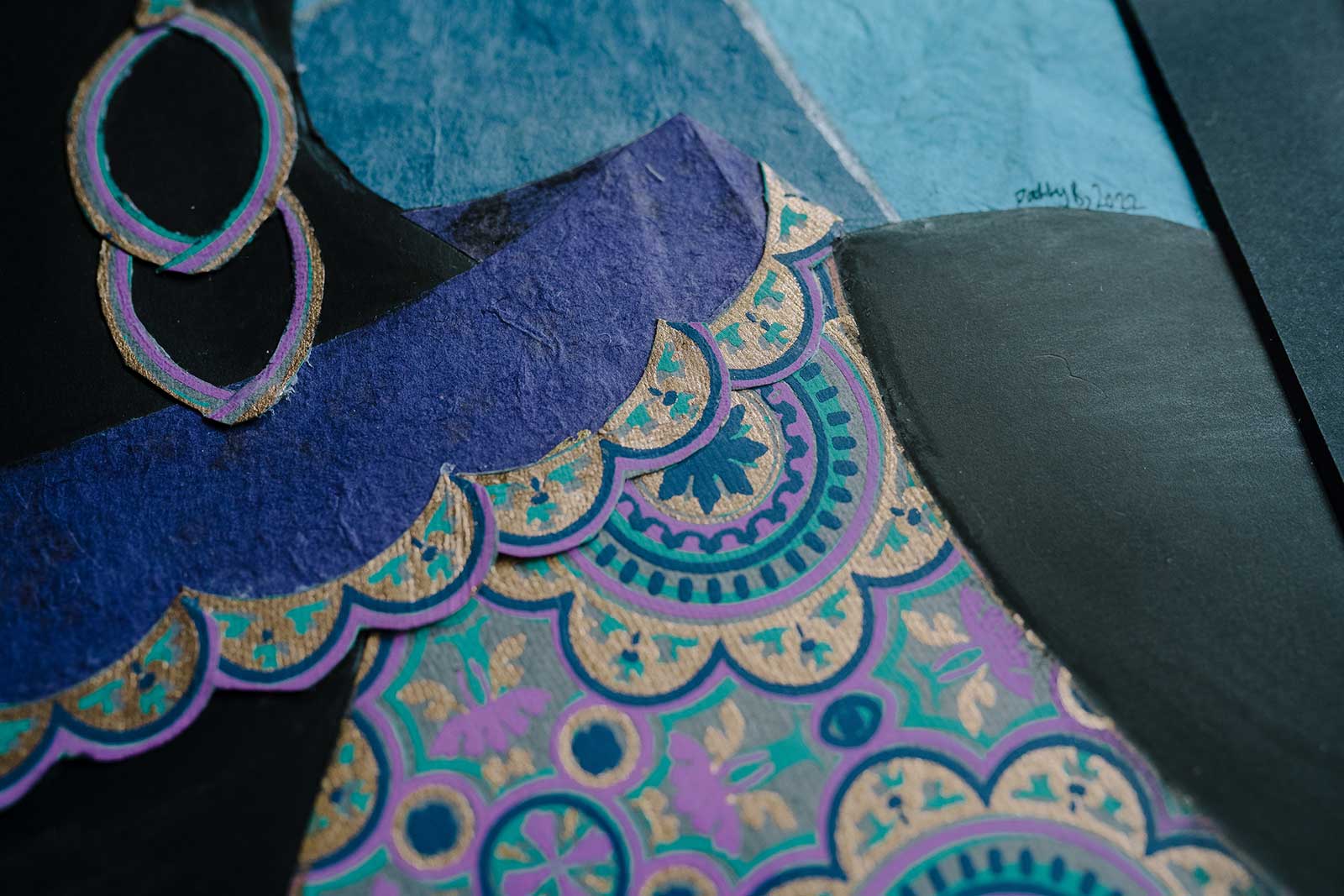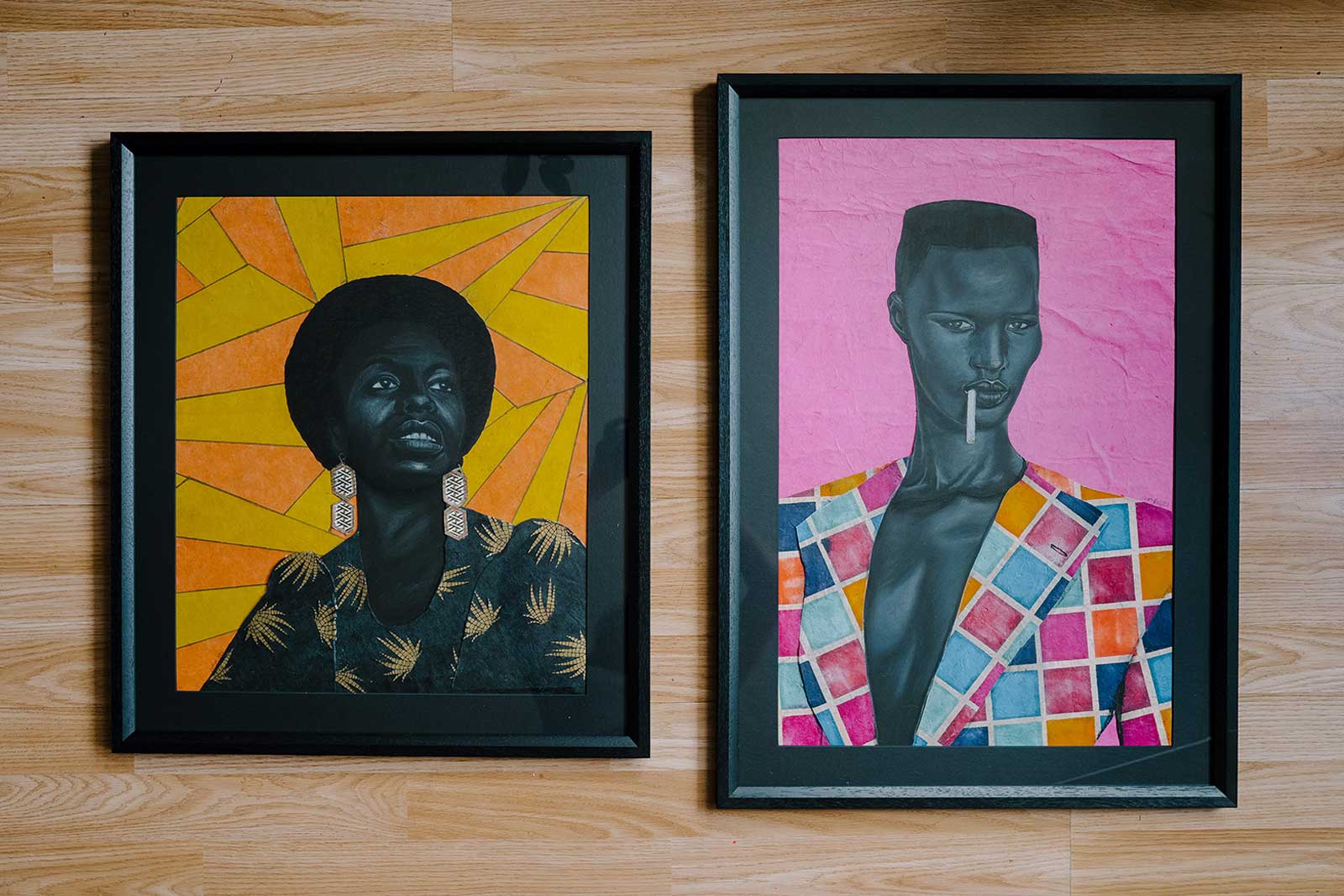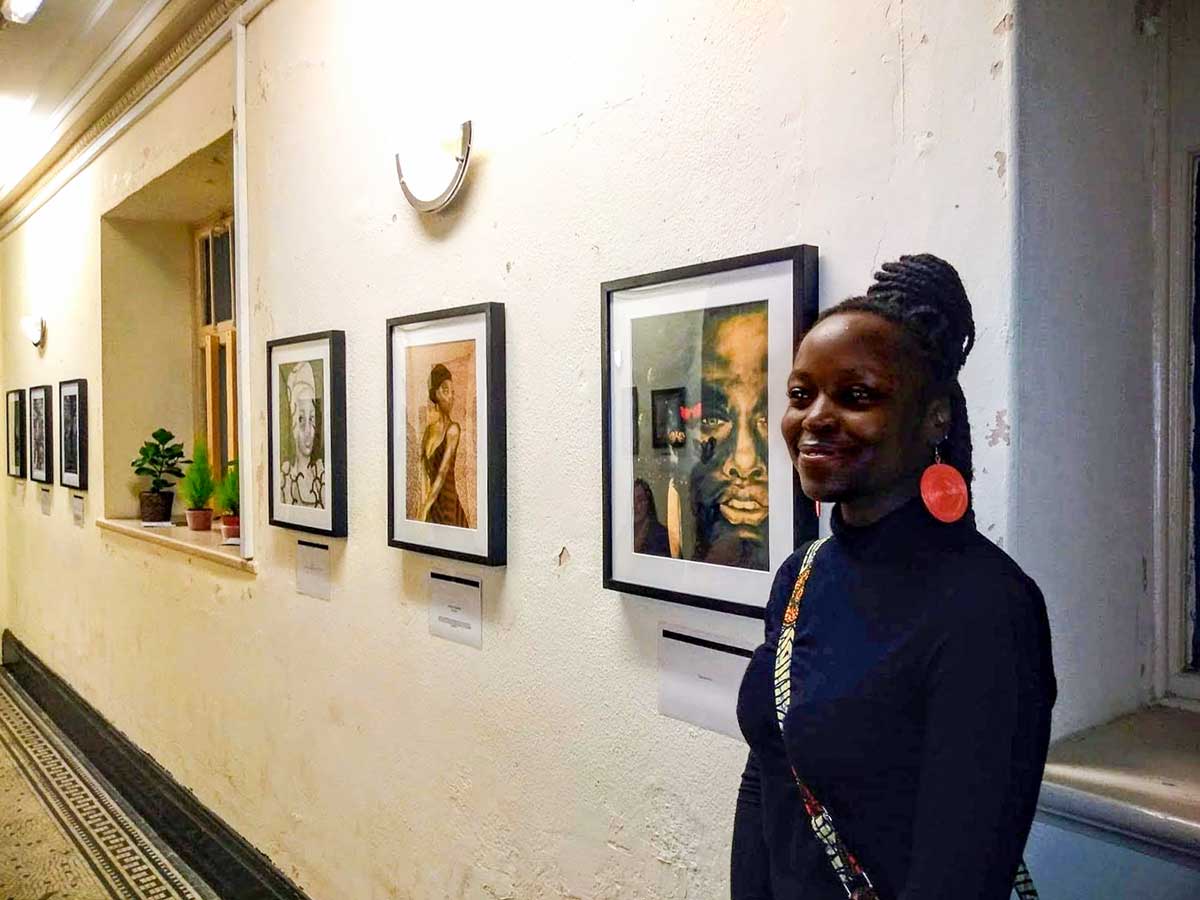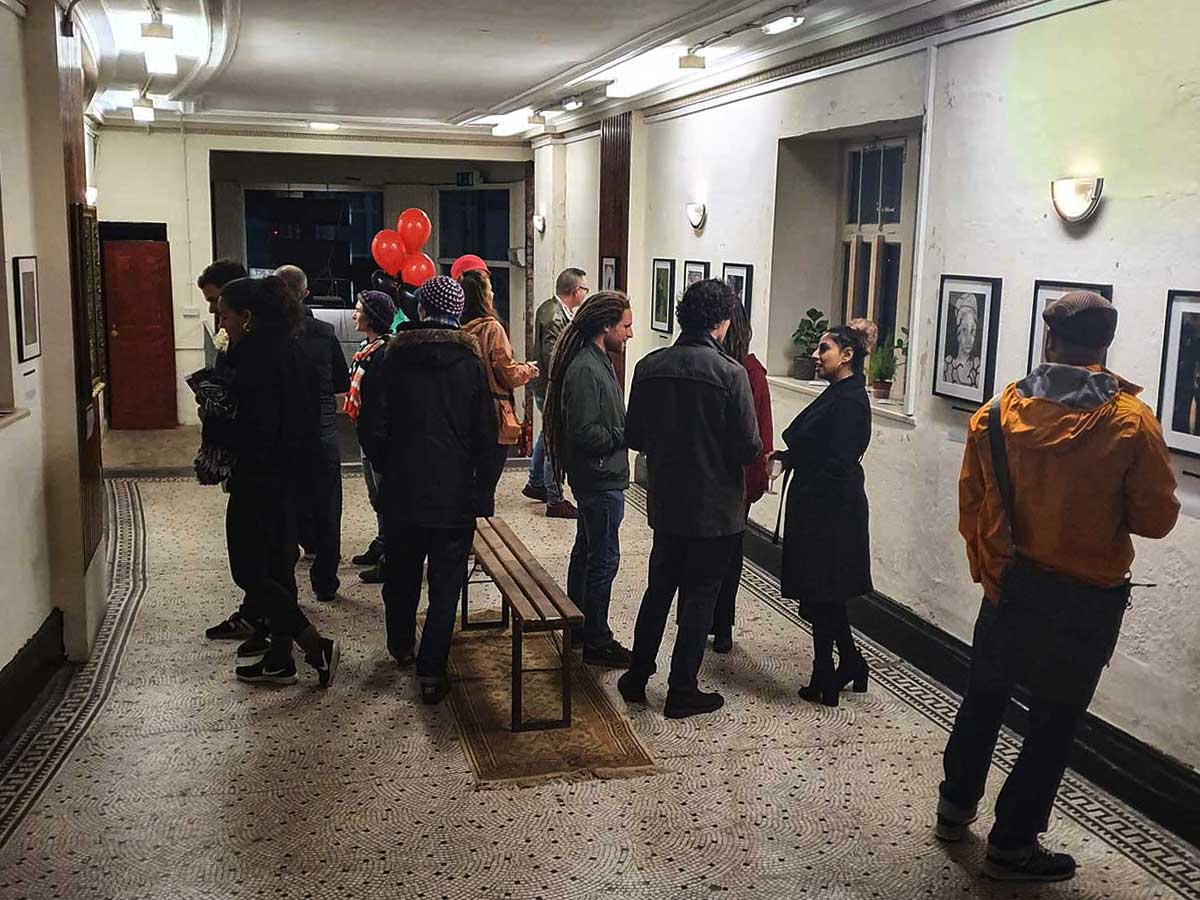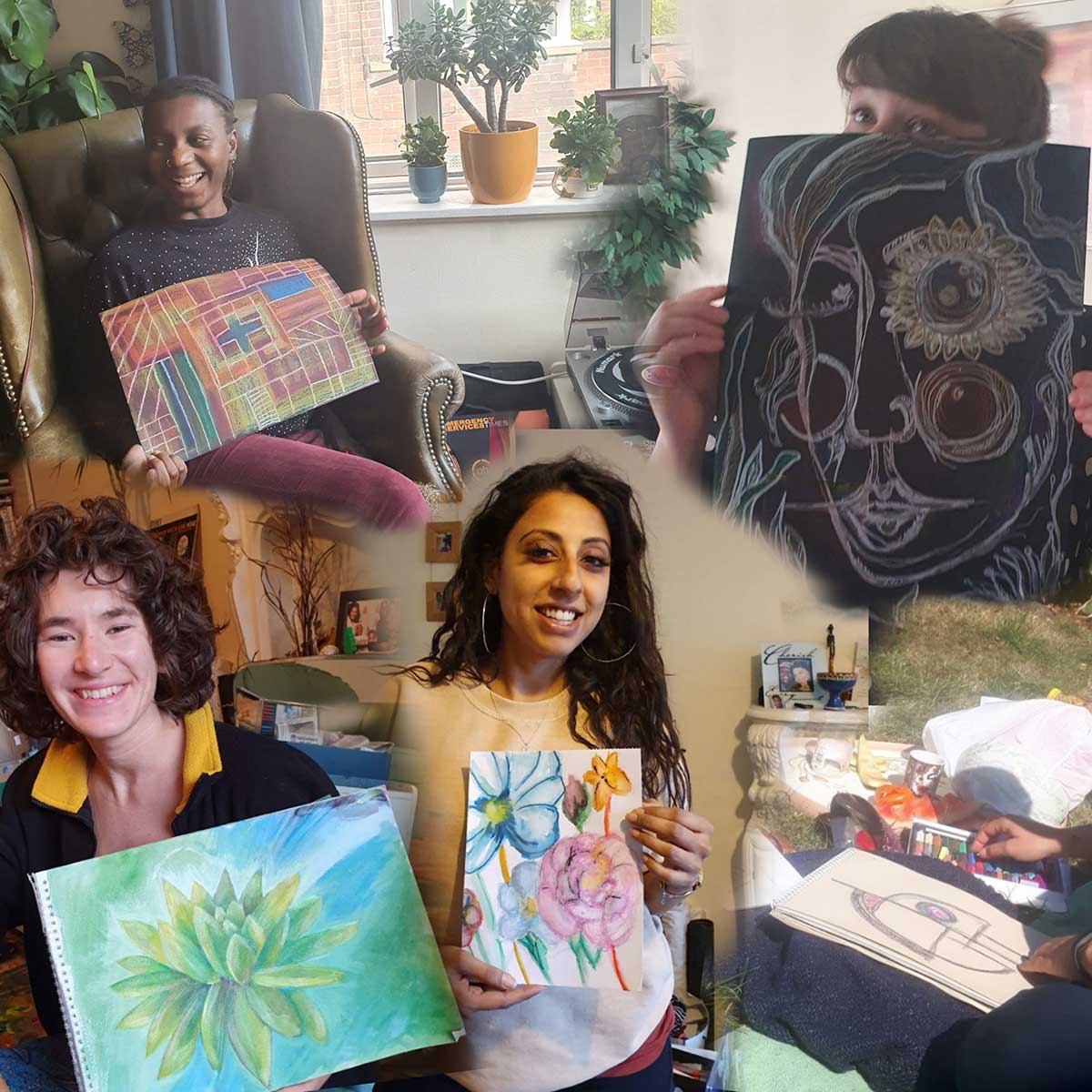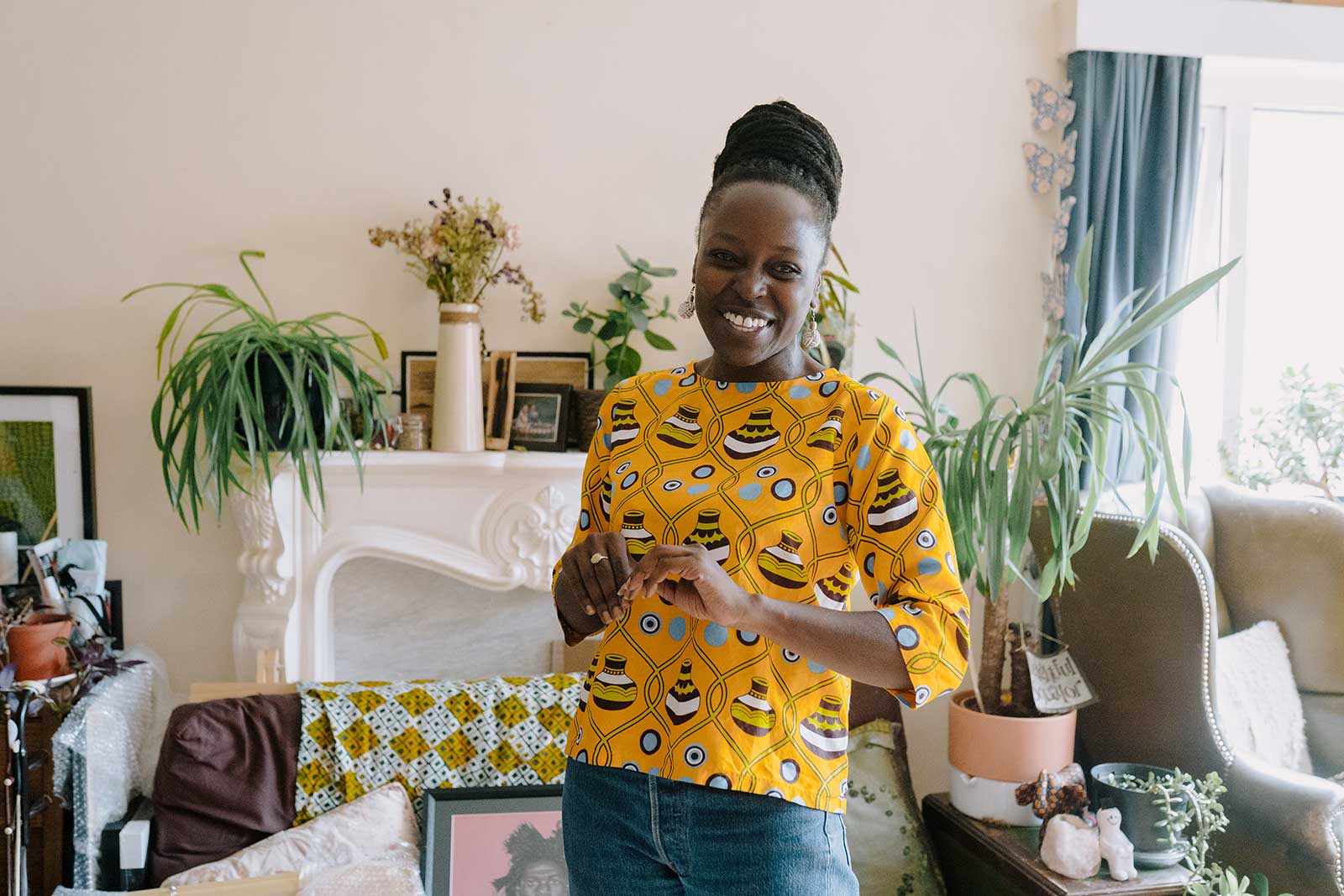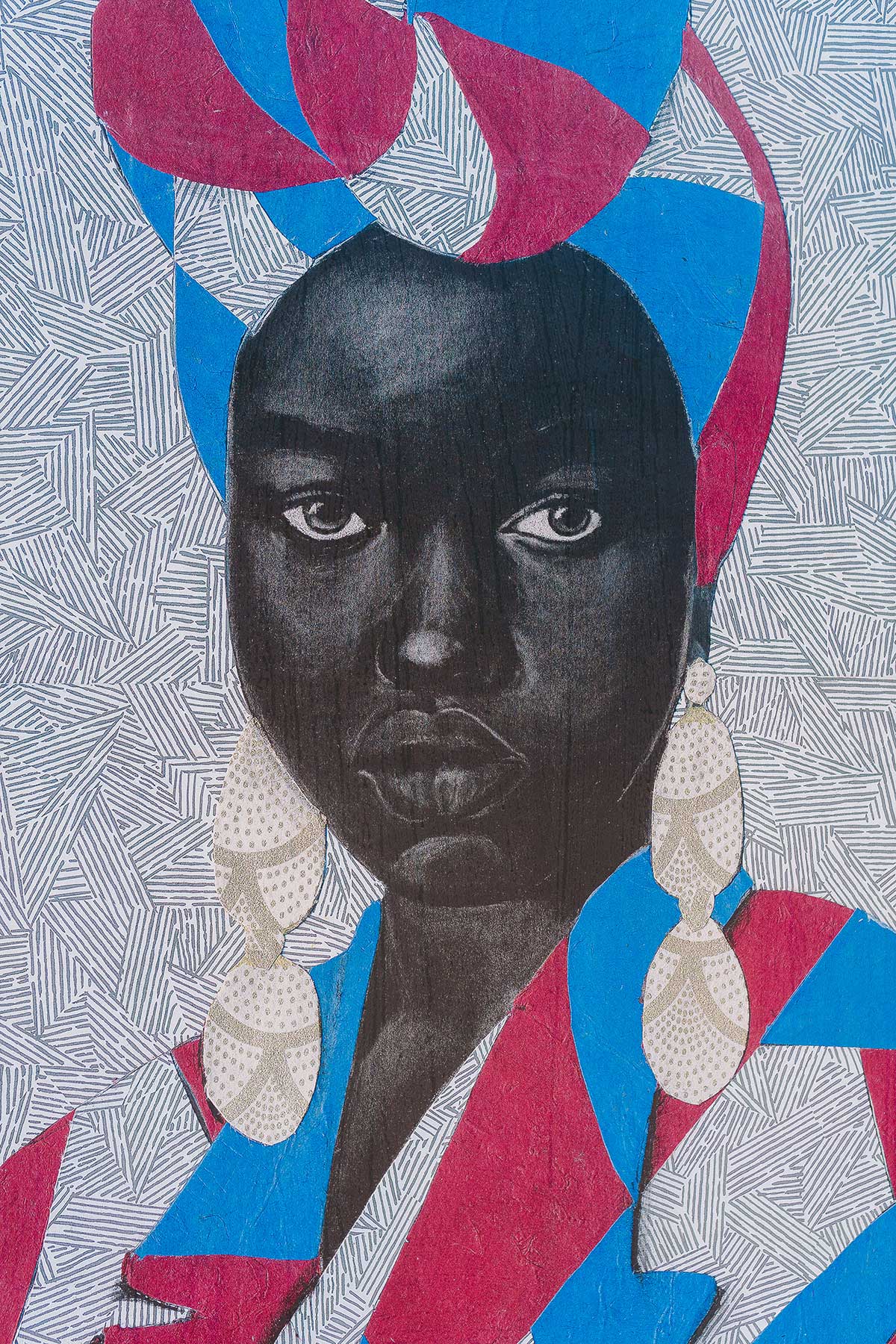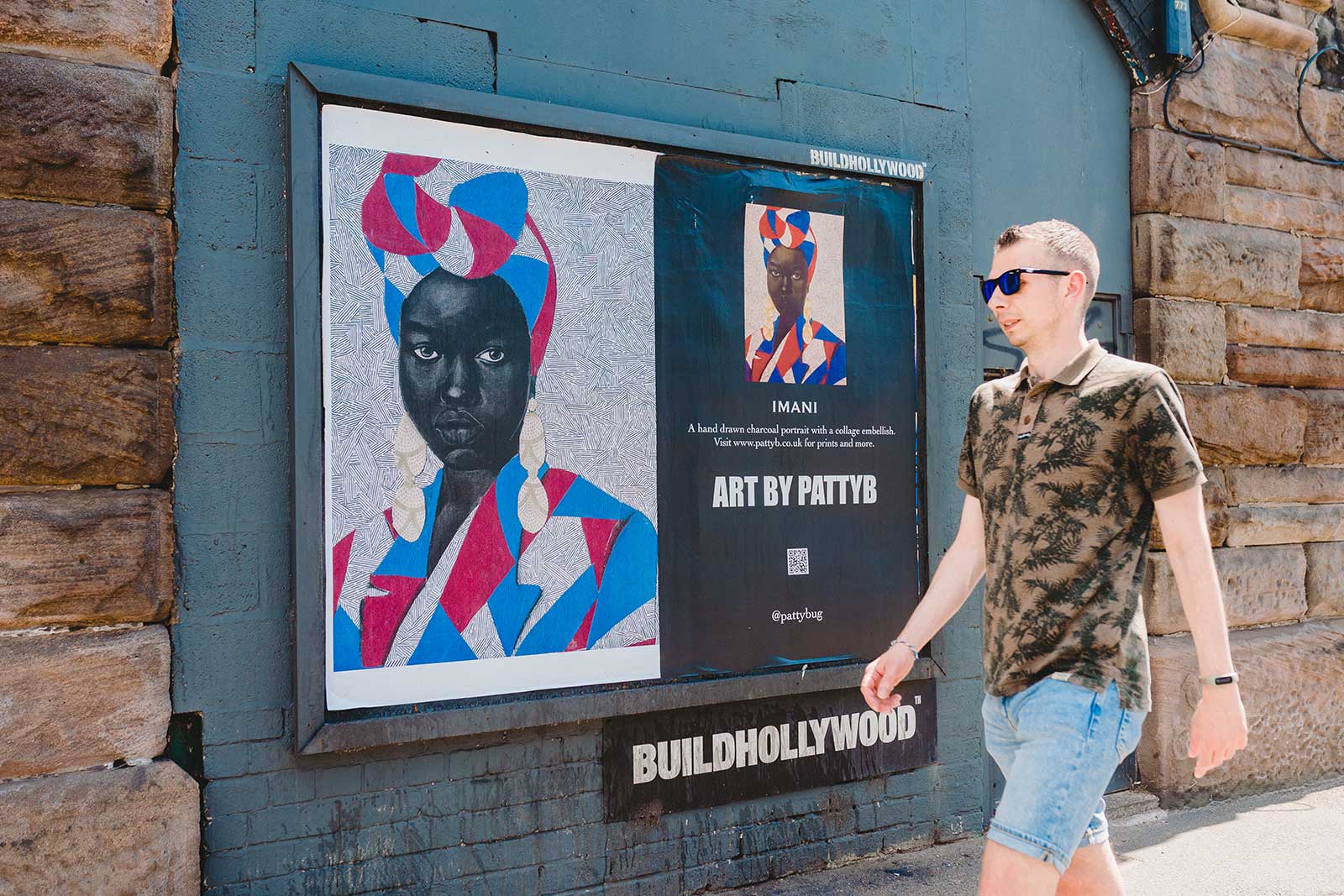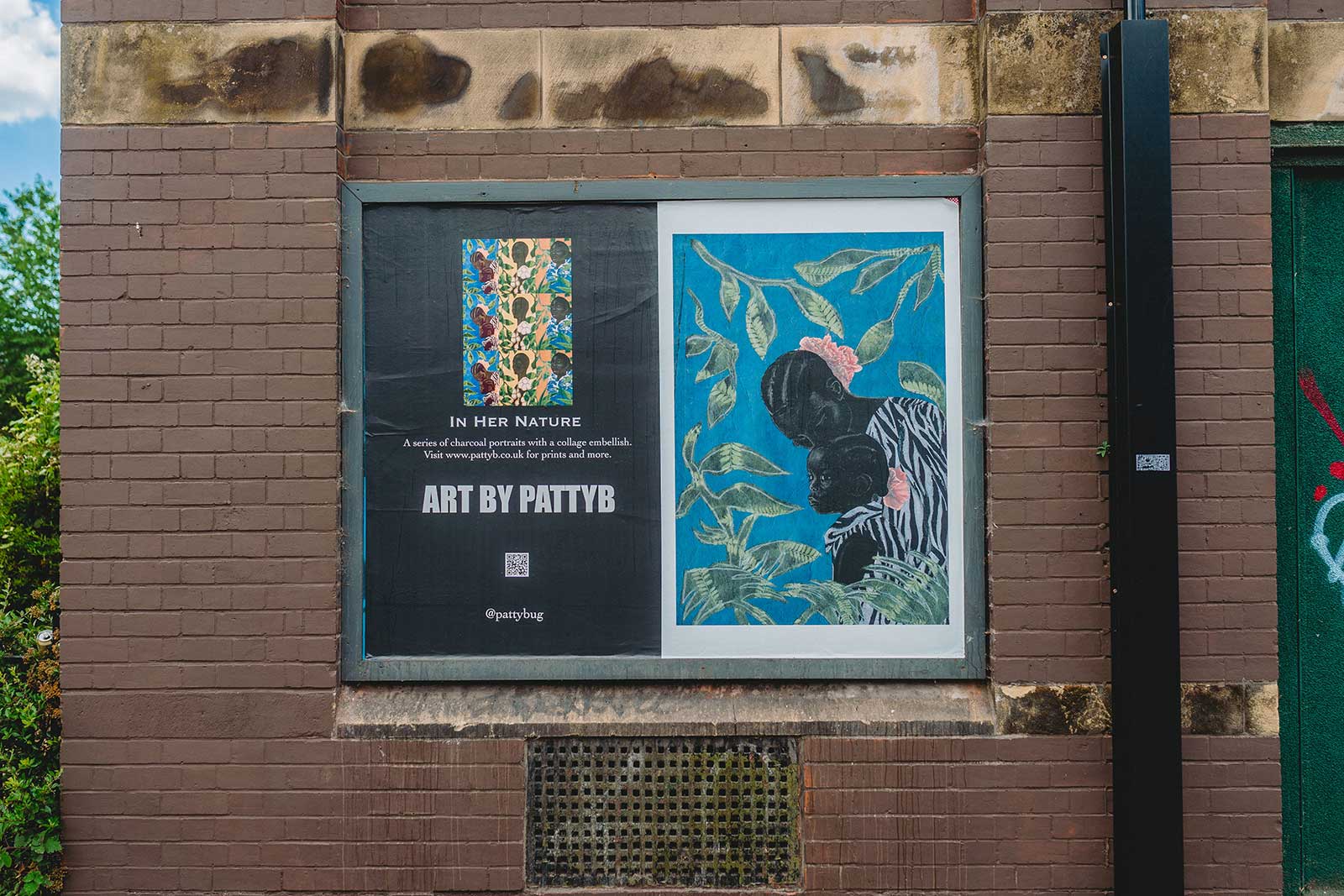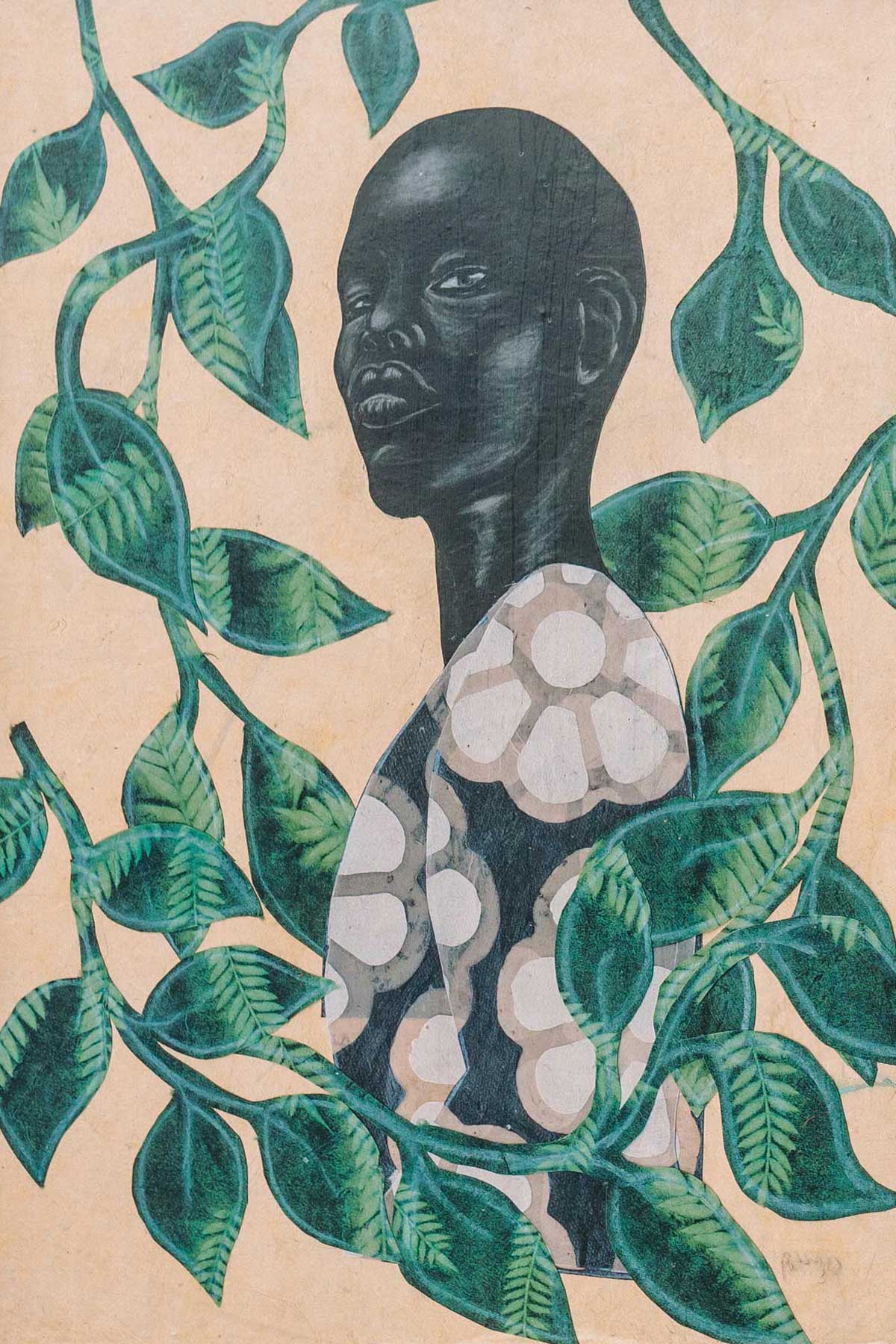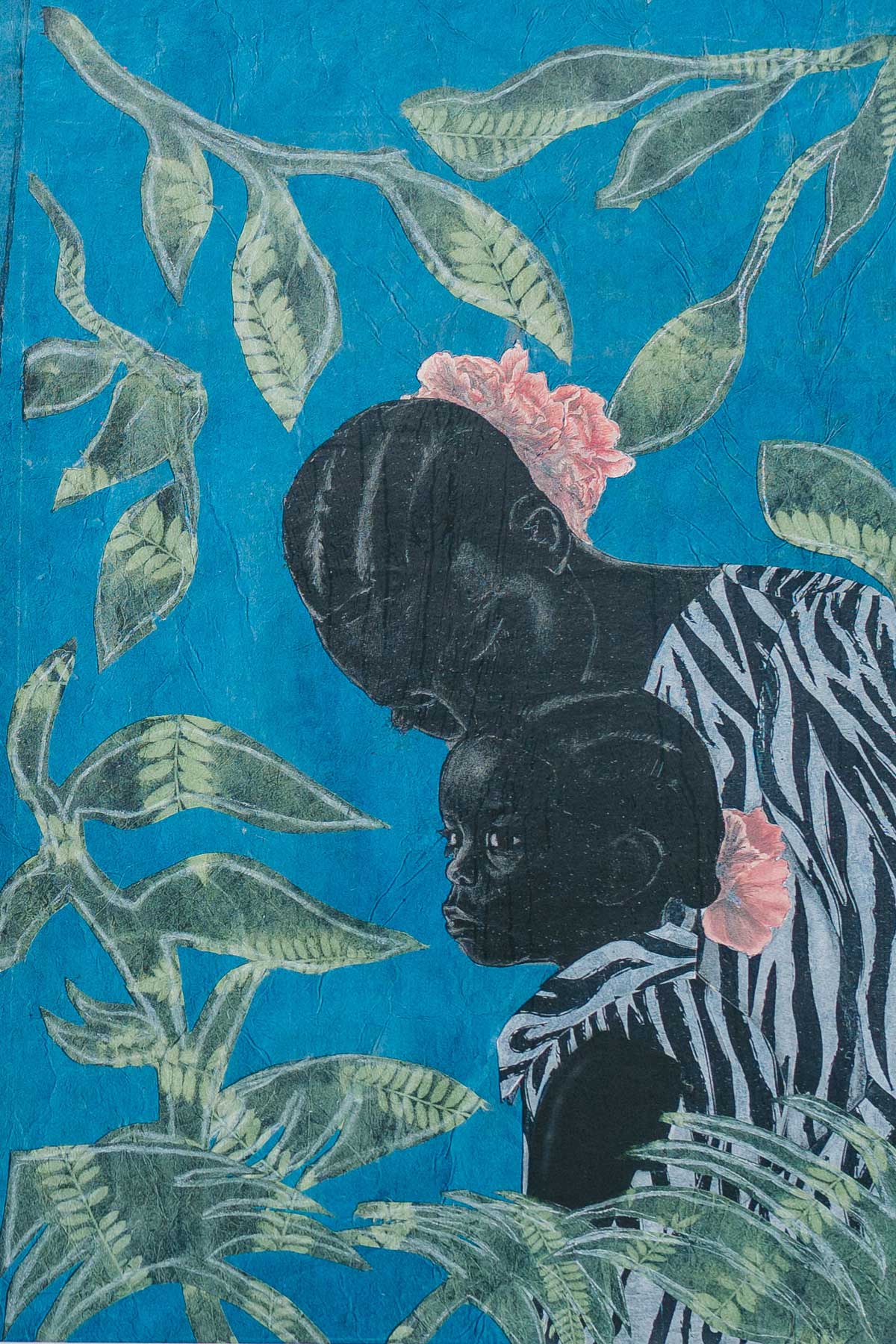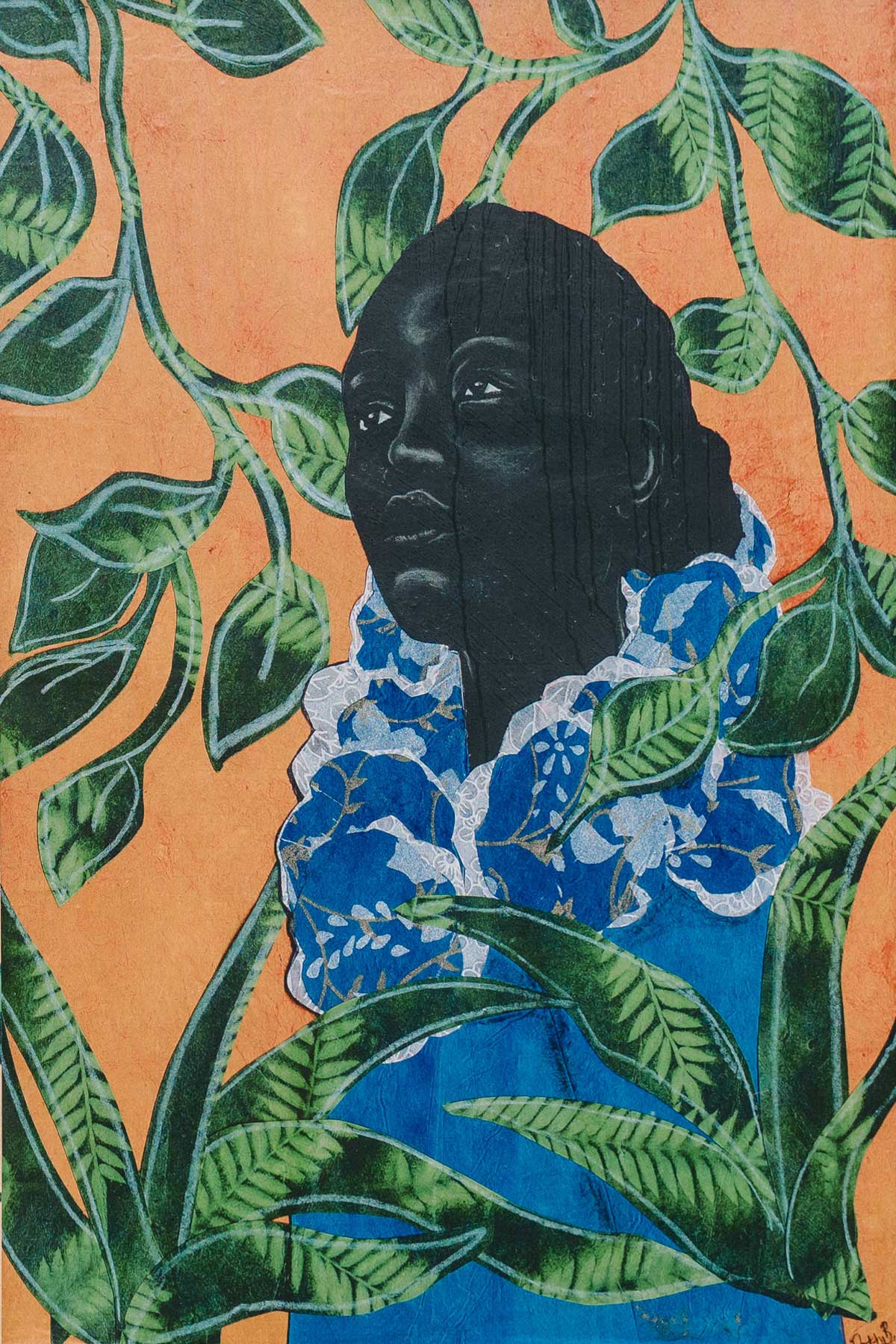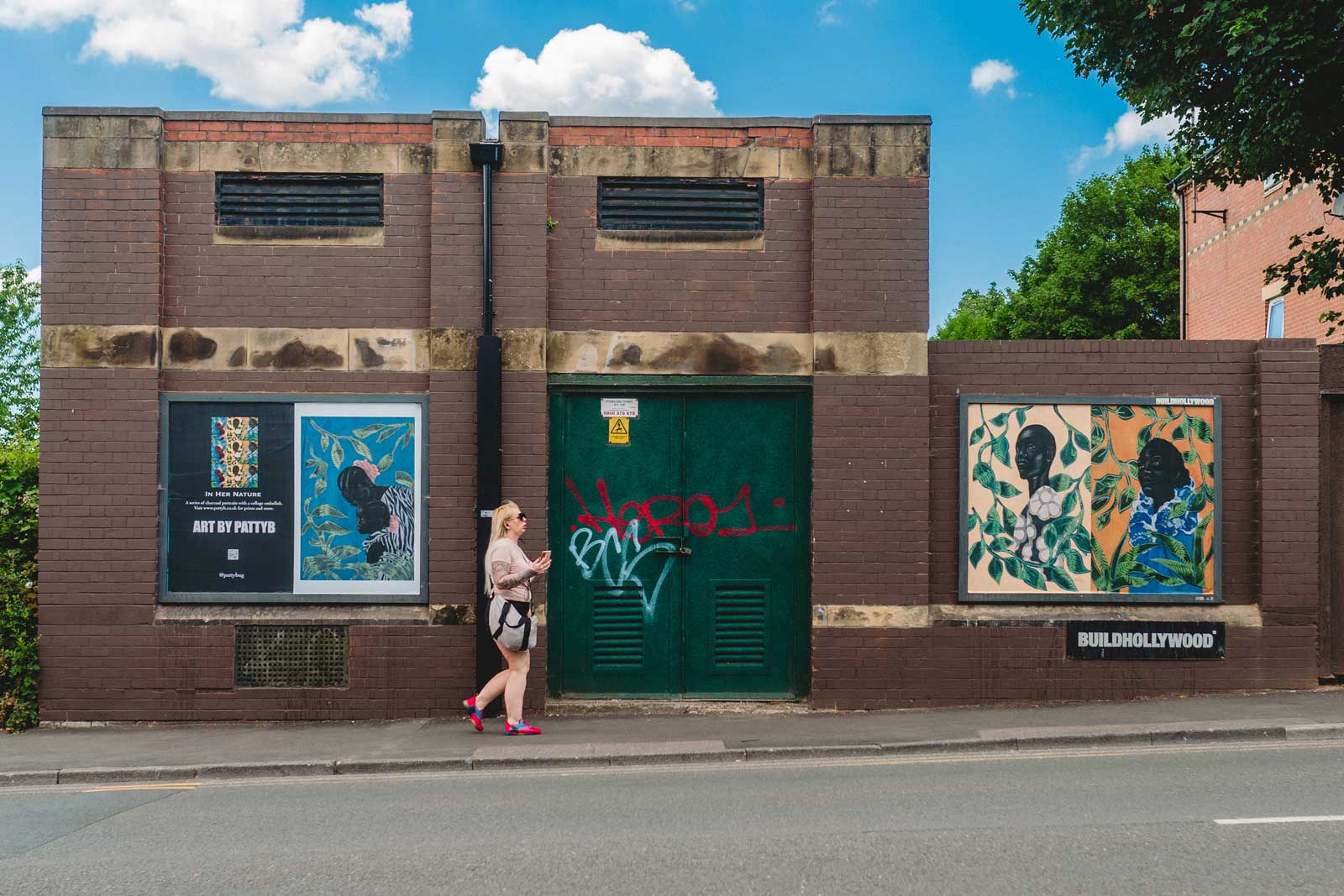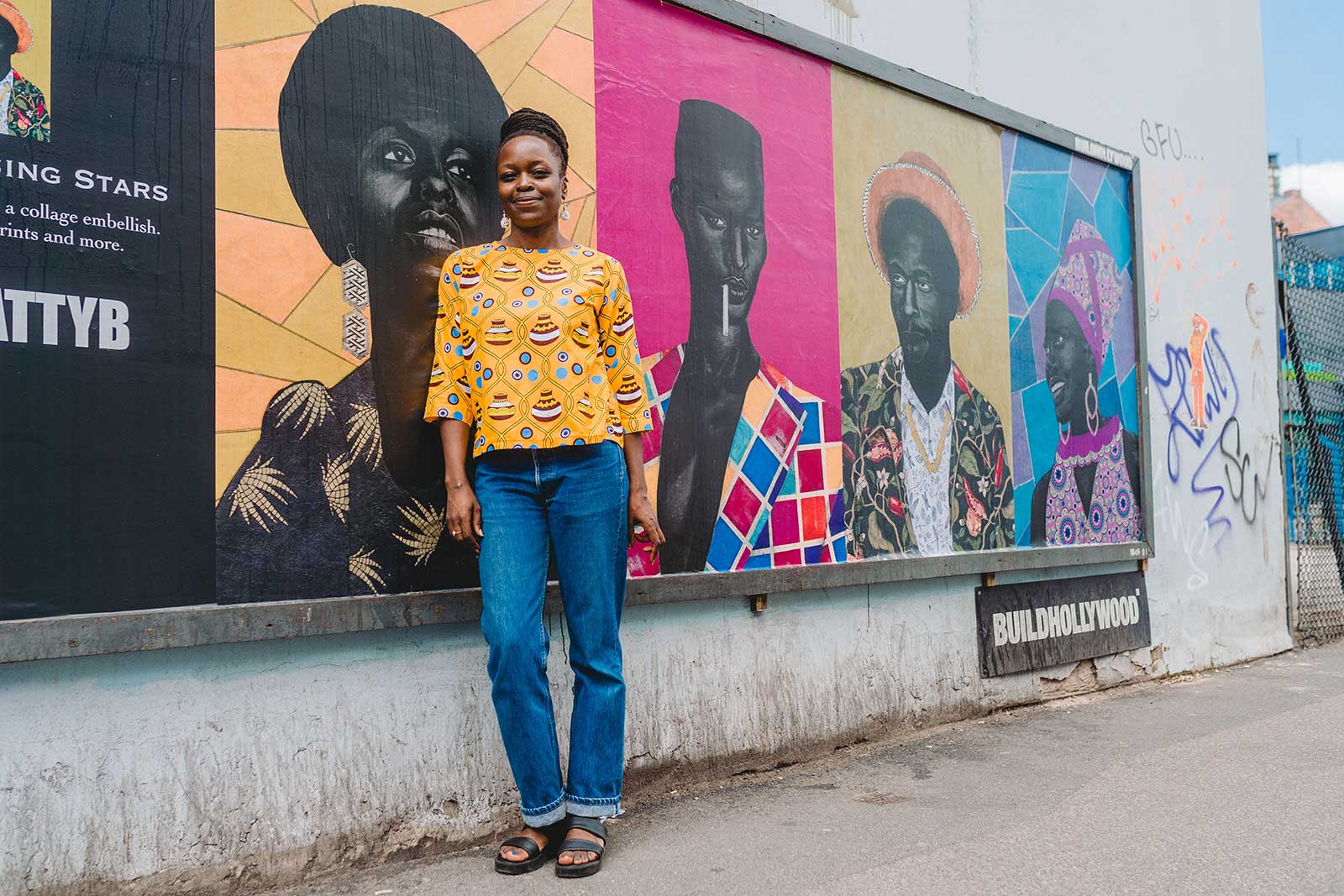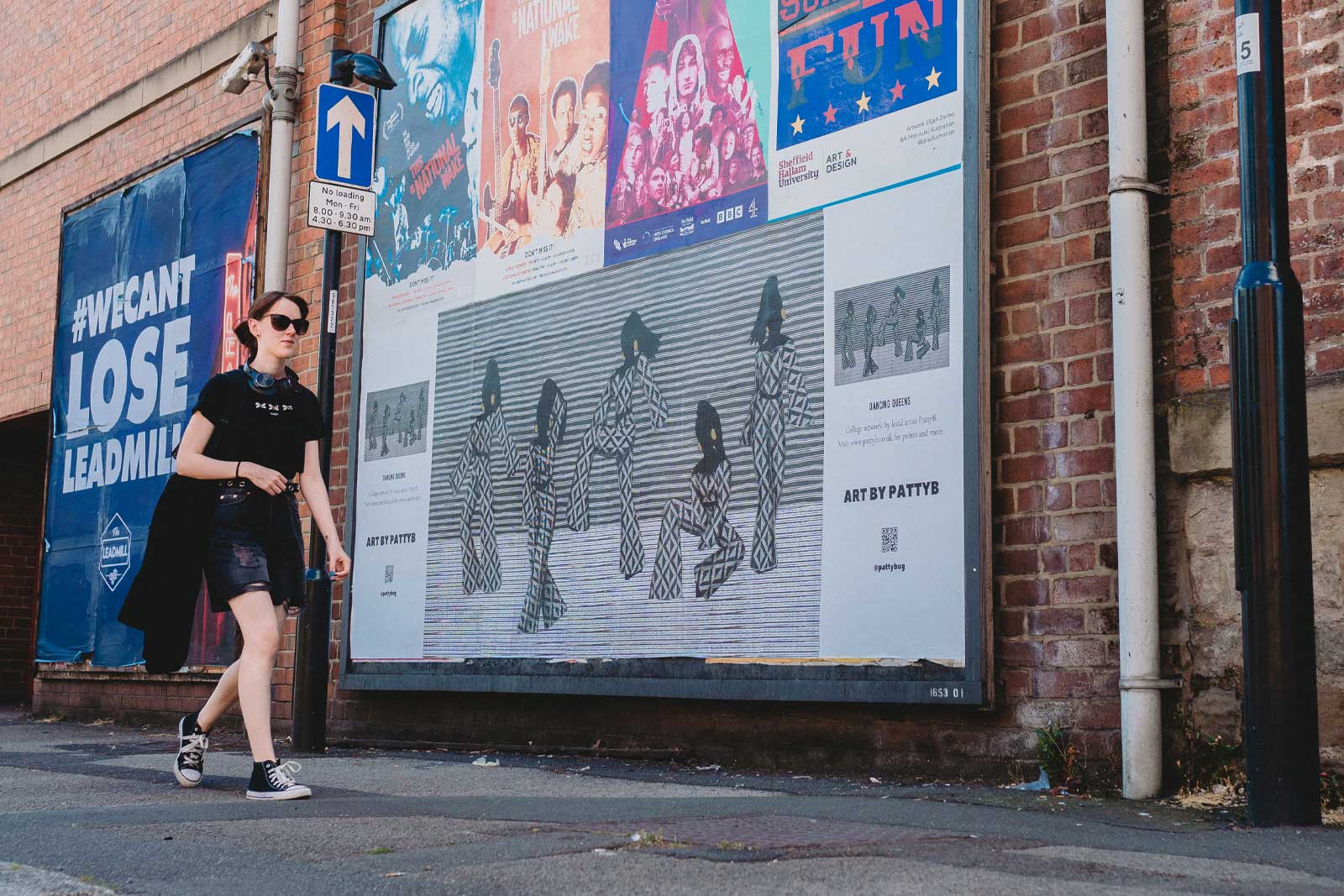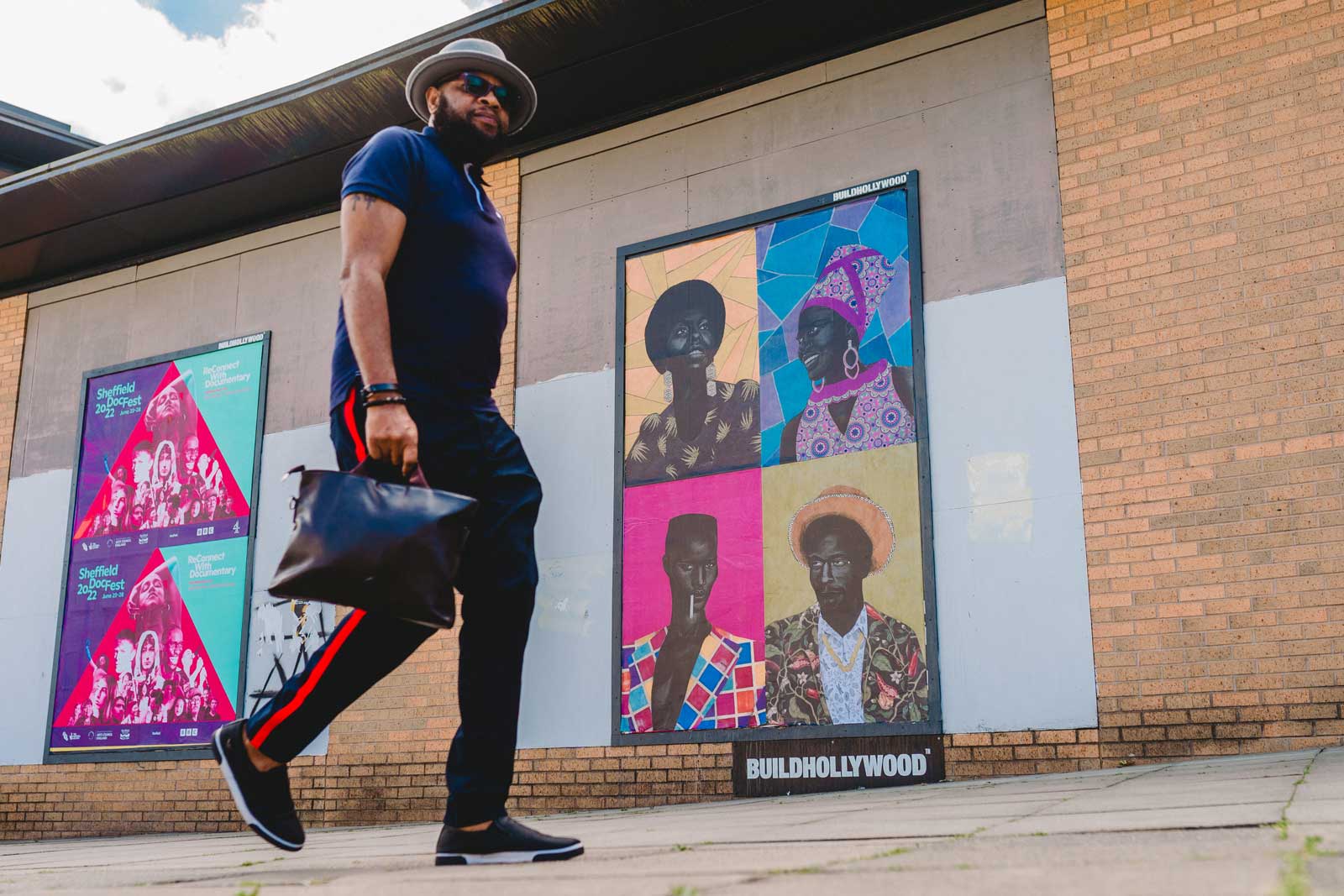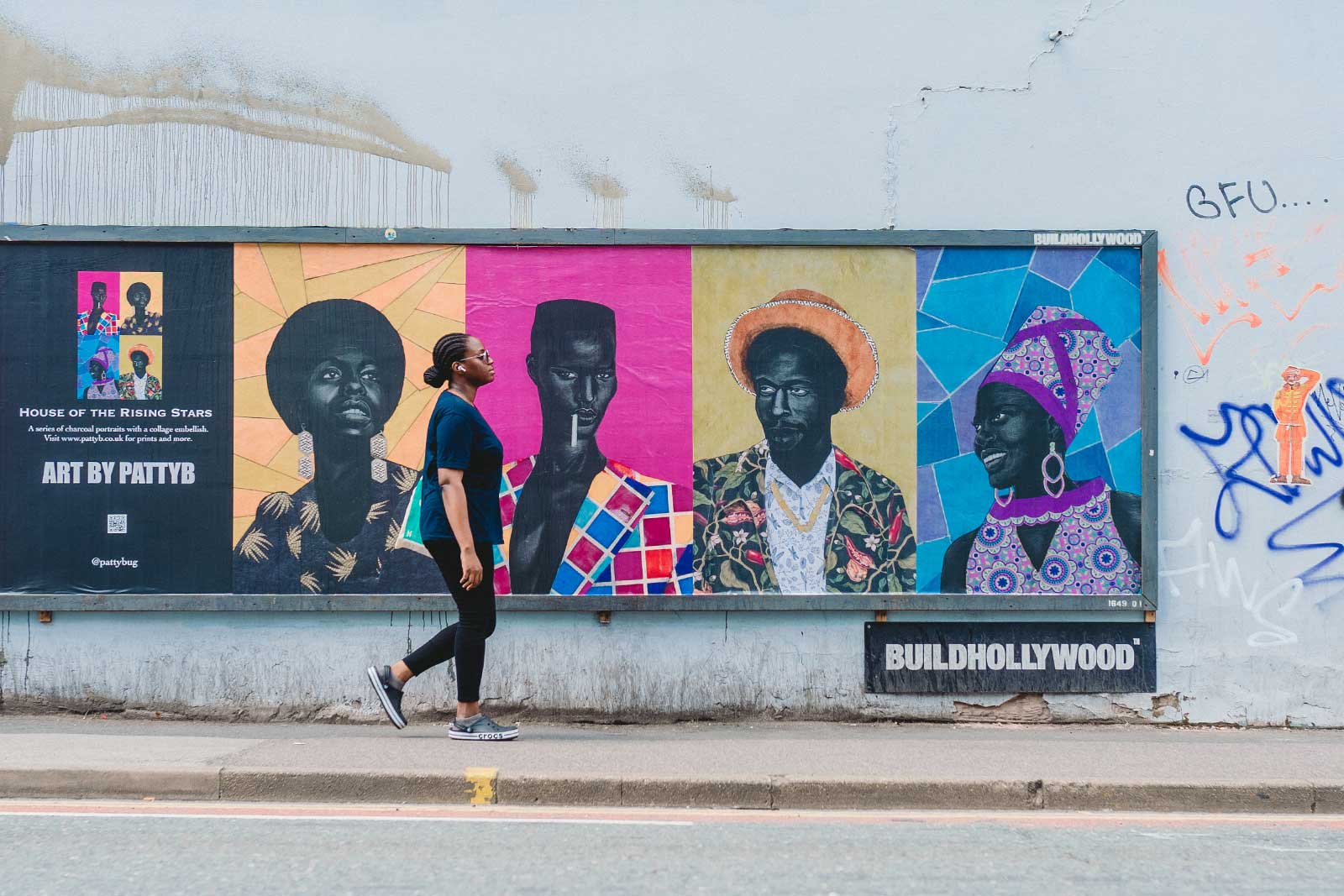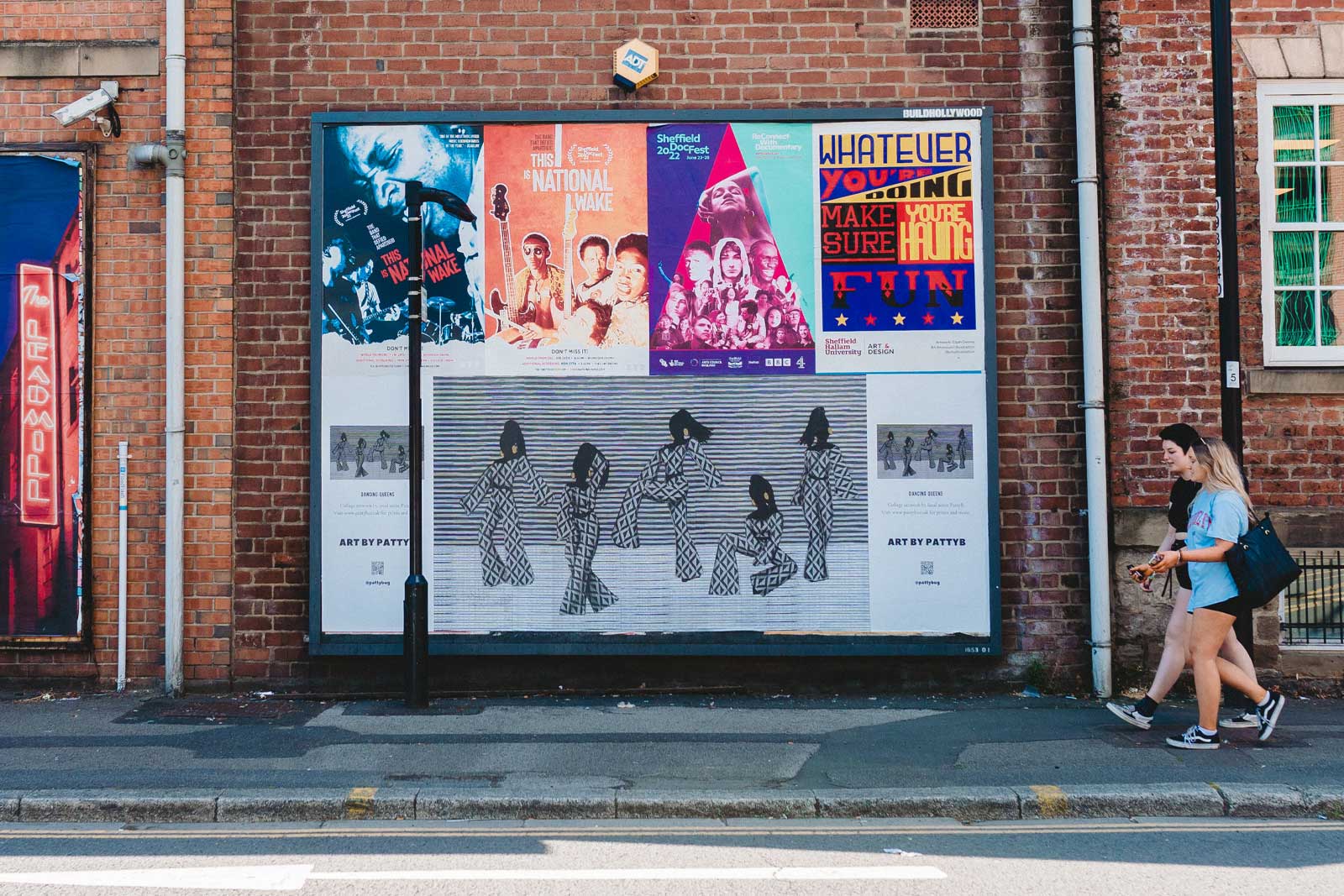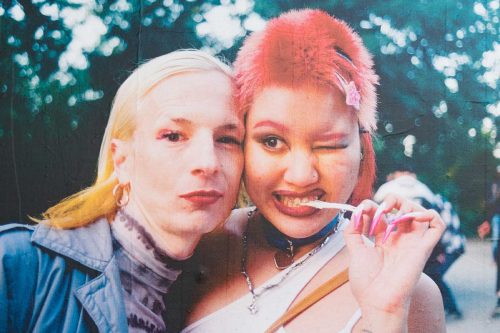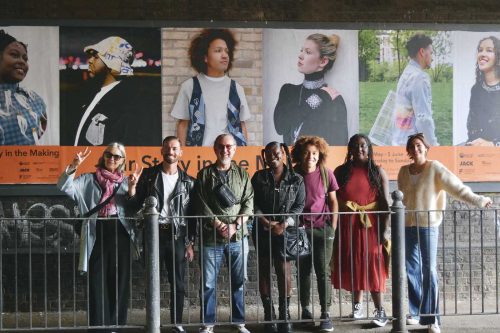Your Space Or Mine
Meet Patricia Bugembe, the artist finding the power in art’s therapeutic tools
The speech therapist turned mixed media artist talks us through her creative process and her latest collaboration with BUILDHOLLYWOOD.
Time and time again, artists on the rise have proved there are no limitations on art and artists are not always born after taking the traditional route of studying art. That is exactly how artists like Patricia Bugembe find and claim their space in the world of art.
After growing up in Ethiopia, Bugembe moved to Sheffield to study Psychology and Cognitive Neuroscience. “I come from a long line of people who work in the mental health and medical field. My grandfather was a psychiatrist, my mother is a psychologist, and my elder sister is a paediatrician that specialises in neurodevelopmental conditions. And so, then I followed suit and went into psychology and neuroscience so I too could work with people with autism and other neurological conditions,” she explained. It was not until a few years ago, when she turned to drawing as a form of release, that she realised her artistic talent and began to hone her craft.
Since discovering the power of art when experiencing a tough time, Bugembe brought some of her friends together and created the ultimate judgement-free environment: a relaxed art club. “There’s no teacher who “There’s no teacher who knows who will tell us what’s right or wrong. Just us, so we feel the freedom to just sit and draw. With no teacher, and no experts, we’re all exploring from the inside out.” said Bugembe. “So, it’s more about just trying and seeing what comes out, we all just enjoy being free to create whatever,” As well as using her passion to encourage others, Bugembe has also used her rising success as a means of fundraising and helping others. Bringing together her love for art and mental health, Bugembe has raised funds to help black women access psychological therapy through Art for Therapy. On top of this, Bugembe also donates a percentage of her annual shares to the organisation Black Minds Matter.
28.06.22
Words by


